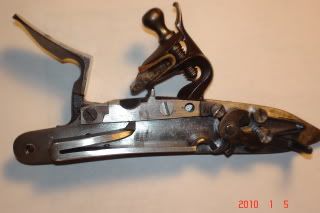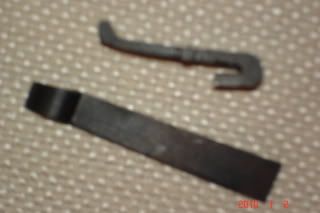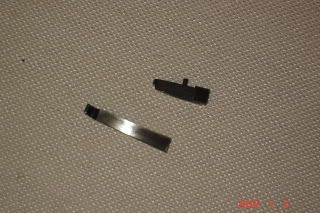I'm trying to put this post together carefully so as NOT to step on anyone's toes. Everyone from the kit maker, to the builder to the lock manufacturer has attempted to stand by this product so far. However, my curiosity has got the better of me.
The topic is Siler mainspring breakage.
I have a new Siler lock that I bought a few years ago as part of a kit, disassembled into it's pieces in my workshop. When it was reassembled recently in a rifle, upon pulling the hammer back, it went limp and showed excessive play - broken mainspring.
The kit supplier sent a new mainspring to the builder from Chambers Flintlocks and the builder installed it in the lock and sent it to me. 25 shots later, the new mainspring broke at a most inopportune time.
I contacted the kit supplier again and he had Chambers send me a 3rd mainspring which I paid airfreight on (hunting season was about to end) and I installed in the lock. I sent the 2nd broken spring and some photos of the lock to the manufacturer but they cannot see a defect in either. Photo of the lock is below with 3rd mainspring installed.

I really want to develop trust in the lock but everyone tells me they've never seen this happen before in a Siler so I can't help but wonder if I have a defective lock - I guess only time will tell.
I wonder how rare this really is and, of course what the cause(s) could be (I think too much). Has anyone EVER had a similar problem with a large Siler flintlock? Anyone have a good idea what the likely cause is?
Finnwolf
The topic is Siler mainspring breakage.
I have a new Siler lock that I bought a few years ago as part of a kit, disassembled into it's pieces in my workshop. When it was reassembled recently in a rifle, upon pulling the hammer back, it went limp and showed excessive play - broken mainspring.
The kit supplier sent a new mainspring to the builder from Chambers Flintlocks and the builder installed it in the lock and sent it to me. 25 shots later, the new mainspring broke at a most inopportune time.
I contacted the kit supplier again and he had Chambers send me a 3rd mainspring which I paid airfreight on (hunting season was about to end) and I installed in the lock. I sent the 2nd broken spring and some photos of the lock to the manufacturer but they cannot see a defect in either. Photo of the lock is below with 3rd mainspring installed.

I really want to develop trust in the lock but everyone tells me they've never seen this happen before in a Siler so I can't help but wonder if I have a defective lock - I guess only time will tell.
I wonder how rare this really is and, of course what the cause(s) could be (I think too much). Has anyone EVER had a similar problem with a large Siler flintlock? Anyone have a good idea what the likely cause is?
Finnwolf







